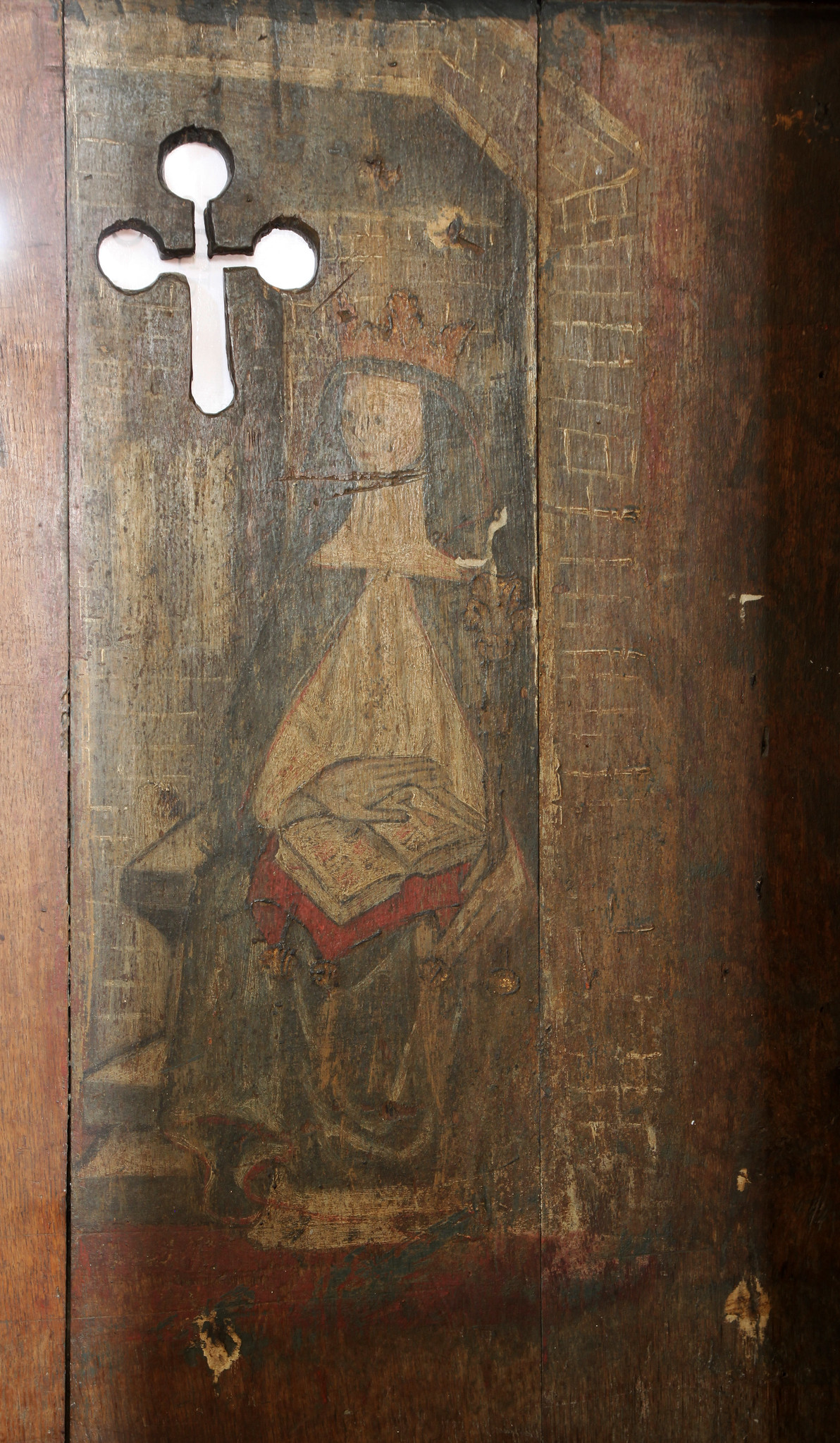The Stanton Harcourt Rood Screen

St Michael's, Stanton Harcourt in Oxfordshire, is a treasure house, a fine cruciform church of Norman origin, containing a wonderful array of monuments and important fittings. The Early English chancel, built around 1250, is a space of breathtaking purity and beauty. It's triple lancets are divided by clusters of slender shafts, topped with stiff leaf capitals all still retaining significant traces of their medieval polychromy in rich earth colours.

Between the thirteenth century chancel and the fourteenth century crossing tower, is the rood screen. It's not just any old, bog standard, rood screen as it's form suggests that it also dates from c.1250. It is therefore among the earliest, if not the earliest, surviving timber screen in a parish church. There are a couple of other thirteenth century screens. There's one at Gilston in Hertfordshire, but it has been heavily restored in the nineteenth century and there is little left now that is old. There is a second one in Thurcaston in Leicestershire, but it too has been altered and is no longer in situ - in any case it's crude and is not a great work of art. The screen at Stanton Harcourt in contrast is not only very early, but it has been very little altered, is still in it's original position and visually is in perfect harmony with its architectural setting.

I'm quite used to seeing East Anglian screens of the later fifteenth century and what strikes me immediately with this screen is the relative height of the dado (the portion below the middle rail) to the upper openwork. The dado takes up perhaps 60% of the height of the screen.


The openwork consists of three divisions, each containing four openings, the middle division being the doors. The openings are topped with moulded trefoils that are supported by delicate banded shafts, the shafts echo the architectural forms of the Early English chancel itself.

The dado of the screen was clearly updated in the later Middle Ages, with a painted decorative scheme, but all that survives of that painted decoration is a solitary image of St Etheldreda, seated on a seat with her Book of Hours in it's chemise open on her lap.


When this screen was first installed in the middle of the thirteenth century the ceremony of the Elevation of the Host, that would become to be touchstone of late medieval parochial religion, had yet to be introduced. The high dado of this early screen would not have been much of a nuisance or an issue for another hundred years or so after it was constructed. By the end of the fifteenth century, however, it had become problematic. Here the solution was a pragmatic one and the whole of the bottom of the dado is pierced with an array of different openings or squints or different shapes and sizes, cut through to allow those kneeling before the screen an uninterrupted view of the Elevation of the Host in the chancel beyond. Many of these are crude openings and were no doubt roughly worked by someone cutting away with a knife. One of them takes the form of a Perpendicular window with panel tracery, which conveniently dates them to the fifteenth century.

Comments
The detail of your photographic output has kept me entranced for hours!